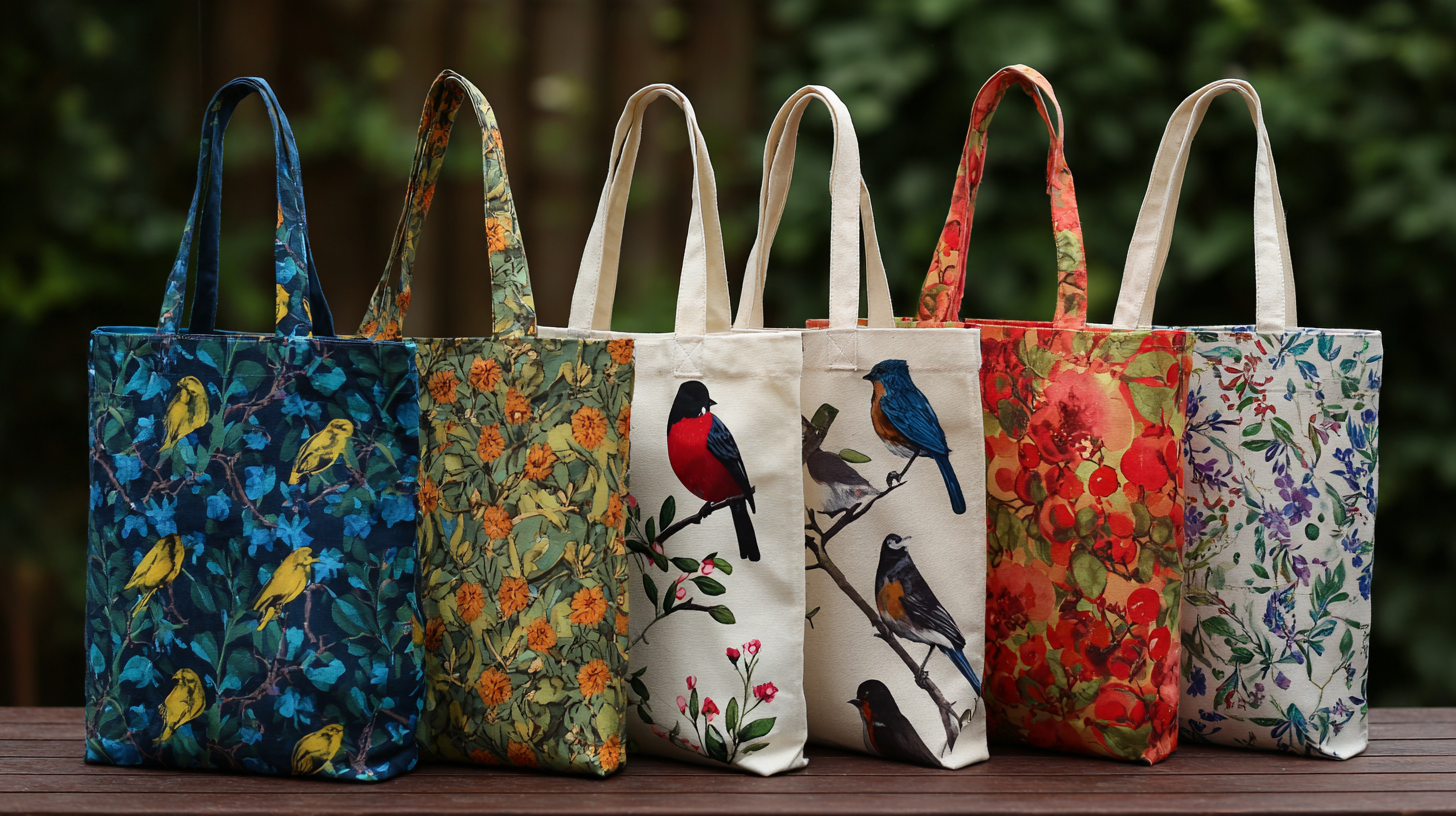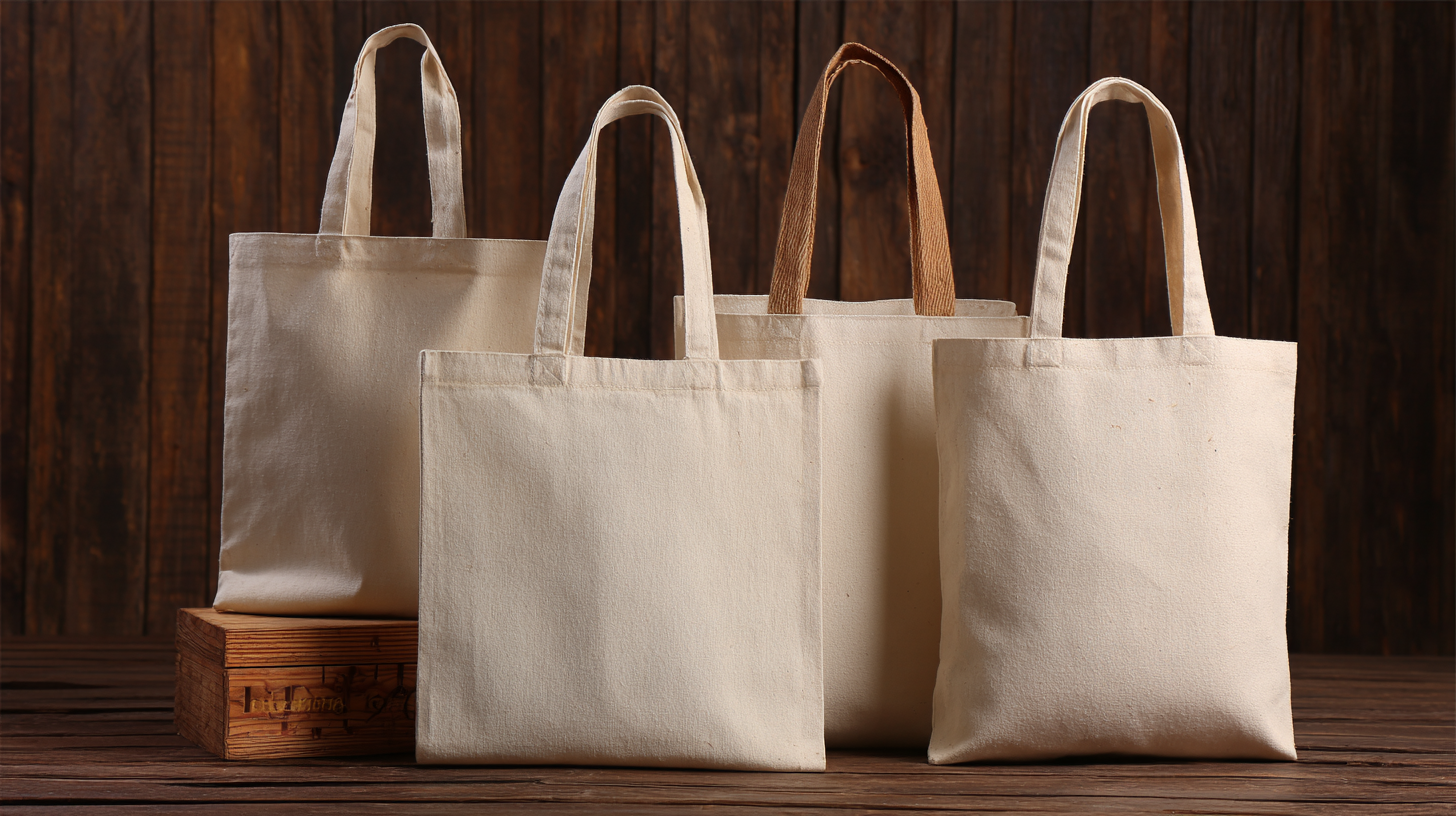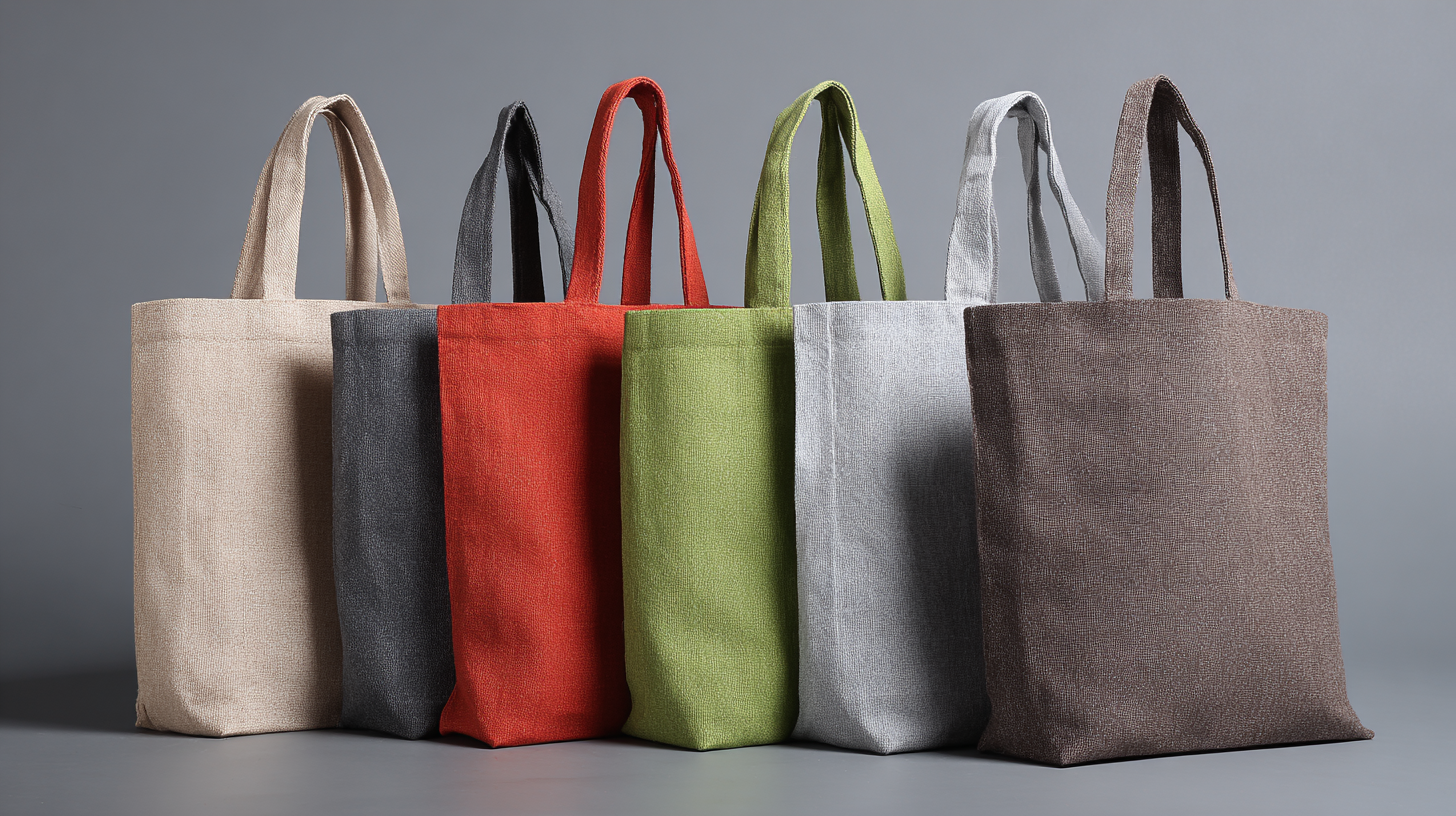As consumers increasingly prioritize sustainability, the demand for Eco Friendly Tote Bags has surged, presenting a significant opportunity for manufacturers, particularly in China. According to a recent market analysis by Grand View Research, the global market for eco-friendly bags is expected to reach USD 7.52 billion by 2025, growing at a compound annual growth rate (CAGR) of 7.3%. This trend not only underscores the importance of environmentally conscious products but also highlights the pivotal role that Chinese manufacturers play in providing high-quality, innovative designs. With a robust supply chain and advancing production techniques, China is positioned to lead the charge in producing tote bags that meet the ecological and aesthetic demands of modern consumers. This blog will explore the unmatched quality of the best eco-friendly tote bags made in China, as well as practical insights on how to choose the right bags for your needs in this rapidly evolving market.

When it comes to eco-friendly tote bags, misconceptions abound that can mislead consumers. One common myth is that all eco-friendly bags are made from sustainable materials. In reality, while many tote bags are produced from recycled or biodegradable materials, some still utilize conventional fabrics that could undermine environmental efforts. According to a 2021 report by the Global Sustainability Institute, approximately 60% of bags marketed as "eco-friendly" do not meet the rigorous standards set by international environmental organizations.
Another prevalent misunderstanding is that eco-friendly tote bags are less durable than their plastic counterparts. On the contrary, several studies indicate that high-quality eco-friendly bags can actually outlast single-use plastic bags, offering a more sustainable option for consumers. Research from the American Institute for Packaging and the Environment shows that reusable tote bags can be used over 100 times, significantly reducing overall waste. As production methods improve and awareness grows, it's crucial for consumers to distinguish between genuine eco-friendly products and those that merely greenwash for marketing advantage.
When it comes to the production of eco-friendly tote bags in China, maintaining high-quality standards poses significant challenges. The intricate process involves numerous stages, from sourcing sustainable materials to the final quality-checking phase. Many manufacturers face difficulties in ensuring that every batch meets the rigorous environmental and durability standards expected by consumers.
Variability in the quality of raw materials, as well as differences in manufacturing techniques, can lead to inconsistencies that affect the overall final product.

Moreover, the rapid pace of production often means that quality control processes can be overlooked. In a market that fiercely competes on price and speed, some manufacturers may cut corners on quality assurance to meet delivery timelines. This situation leaves eco-conscious consumers at risk of purchasing products that do not uphold the promised sustainability and durability.
To address these challenges, it is crucial for manufacturers to implement stringent quality control measures, invest in training, and prioritize transparency in their production processes, ultimately leading to a reliable product that aligns with the values of environmentally conscious shoppers.
In the ongoing dialogue surrounding sustainability, a significant focus has emerged on the trade-offs between eco-friendly materials and their costs. For instance, recent studies have demonstrated that while adopting sustainable practices can enhance environmental performance, they often incur higher economic costs. An integration of life cycle assessment (LCA) and life cycle costing (LCC) provides a framework to elucidate these dependencies, particularly illustrated in sectors like aluminium production and bio-based plastics in food packaging. Consumers are increasingly aware of these trade-offs, often finding themselves sacrificing aesthetic value in favor of sustainable options.
As companies strive to make green products more mainstream, they face formidable challenges driven by rising inflation and heightened consumer expectations. The desire for sustainable products conflicts with economic realities, leading to a delicate balancing act. Recent surveys reveal a strong commitment to sustainable packaging, yet many organizations struggle to ensure their offerings align with eco-friendly goals. The pursuit of net-zero also emphasizes the importance of sourcing sustainable materials, prompting discussions on how to navigate the complexities of environmental and economic performance without compromising on quality. These dynamics underscore the need for a nuanced understanding of how to effectively achieve sustainability while considering consumer behavior and production costs.
In today's marketplace, consumer awareness is more critical than ever, especially when it comes to eco-friendly products. With a myriad of options available, it’s essential for shoppers to differentiate between genuinely sustainable items and those that are merely greenwashed. Understanding the materials and production processes behind products can empower consumers to make informed decisions that support the environment. For instance, the best eco-friendly tote bags made in China often utilize organic materials and sustainable manufacturing practices that can significantly reduce environmental impact.
When evaluating tote bags, consumers should look for certifications and transparent sourcing information. Labels that indicate organic certification, fair trade practices, or biodegradability can be strong indicators of a product’s eco-friendliness. Additionally, understanding the lifecycle of a product, from production to disposal, is crucial. Engaging with brands that prioritize sustainability and share their eco-conscious journey can help consumers feel confident in their choices, ensuring that their purchases contribute positively to the planet rather than adding to the waste crisis.
This bar chart illustrates the consumer ratings for various quality dimensions of eco-friendly tote bags. These ratings reflect the perceived quality attributes that consumers value, emphasizing reusability and sustainability as key factors in their purchasing decisions.
The effectiveness of eco-friendly tote bags is significantly influenced by their design. A well-thought-out design not only enhances functionality but also ensures that the bags serve their purpose of reducing plastic waste. When bags are poorly designed, they can fall short in various aspects—durability, capacity, and usability—leading consumers to abandon them for less sustainable options. Features like sturdy seams, appropriate sizing, and ergonomic handles are critical. Without these, even the most eco-conscious buyer might resort to single-use plastic bags out of sheer frustration.
Moreover, aesthetics play a vital role in the adoption of eco-friendly tote bags. A visually appealing design captures attention and promotes usage, while unappealing designs can deter potential customers. Brands that invest in innovative designs—offering vibrant colors, unique patterns, and functional compartments—tend to attract environmentally conscious consumers more effectively. Thus, the intersection of sustainability and design is key: when eco-friendly tote bags are both practical and attractive, they not only fulfill their environmental purpose but also enhance customer satisfaction and encourage a shift away from disposable products.
